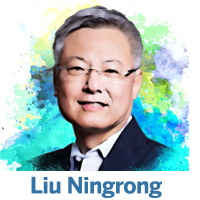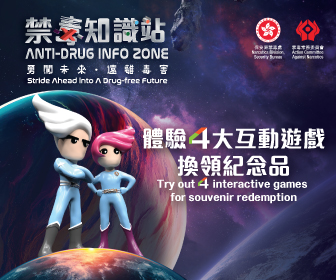China’s “go abroad” strategy has gained renewed momentum, with President Xi Jinping’s recent visit to Hungary serving as a clear indication of the country’s ambitions to expand globally. Beyond the political alliance that China seeks to maintain in Europe, Hungary was chosen as a destination to demonstrate how China’s “go abroad” strategy is evolving. From being the world’s factory and market, China is now driving its enterprises to operate on the global stage, reflecting the changing global geopolitical landscape and resetting of the global economy.
 The “go abroad” strategy originated in 1979, when China’s reform and opening-up policy was just taking off. Initially, the focus was on construction projects in the Middle East and North African countries to earn foreign currency. As China’s State-owned enterprises targeted overseas natural resources, the strategy entered its 2.0 era, characterized by acquisitions of oil fields in Kazakhstan and mines in Australia.
The “go abroad” strategy originated in 1979, when China’s reform and opening-up policy was just taking off. Initially, the focus was on construction projects in the Middle East and North African countries to earn foreign currency. As China’s State-owned enterprises targeted overseas natural resources, the strategy entered its 2.0 era, characterized by acquisitions of oil fields in Kazakhstan and mines in Australia.
With the rise of private manufacturing companies, the “go abroad” strategy entered its 3.0 era, prioritizing mergers and acquisitions of foreign firms for technological gain. These deals mainly served domestic needs and facilitated foreign companies to enter the Chinese market. Examples include TCL’s acquisition of Thomson’s color-TV business and Alcatel’s mobile-phone unit; Lenovo’s acquisition of IBM’s personal-computer business; and Geely Automobile’s acquisition of Volvo Cars.
The “go abroad” strategy has entered a new 5.0 era, driven by China’s increasing economic power. The focus now lies in moving up the supply chain by manufacturing high-tech products and setting up production bases worldwide
After China became the world’s second-largest economy in 2010, the “go abroad” strategy entered its 4.0 era, with Chinese companies making a splash in the international market and shifting toward global-asset allocation. Merger-and-acquisition deals in overseas markets accelerated, with Anbang Insurance purchasing New York’s Waldorf Astoria Hotel; Fosun Group acquiring the French resort brand Club Med; Wanda taking over American Legendary Pictures; and ChemChina buying up Swiss crop seeds and pesticides group Syngenta.
Currently, the “go abroad” strategy has entered a new 5.0 era, driven by China’s increasing economic power. The focus now lies in moving up the supply chain by manufacturing high-tech products and setting up production bases worldwide. China aims to make its brand global, especially in the face of intensified economic competition with the United States. Emerging markets have become a key destination for China’s global expansion.
Despite the challenges of trade protectionism, China’s exports are thriving, particularly in the high-tech and green-tech sectors. The “New Three” — electric vehicles (EVs), photovoltaics and lithium-ion batteries — have emerged as its prominent exports. In 2023, these exports experienced a remarkable surge of 29.9 percent, amounting to a total value of $150 billion. The export of EVs alone increased from 200,000 units in 2019 to 1.4 million in 2023, with a total export value of $34 billion. However, China’s access to the US market, especially for higher-tech products, is limited because of trade protectionism. US President Joe Biden has declared Chinese EVs a risk to US national security, resulting in severe tariff hikes to protect US industries and workers from Chinese competition.
Meanwhile, emerging markets such as Hungary are strengthening their economic ties with China, with Chinese investments worth noting. The world’s biggest battery manufacturer, CATL, has invested heavily in Hungary, with two extensive factories and a total investment of 7.5 billion euros ($8 billion) in the second factory alone. With China holding a 79 percent share of the global lithium-ion battery manufacturing capacity, Hungary aims to overtake the US as the world’s second-largest supplier. Robin Zeng, the founder of CATL, was invited to join President Xi’s recent European trip with other business leaders from private companies manufacturing batteries, photovoltaics and EVs.
BYD, the world’s largest EV maker, has also invested in Hungary and plans to open the first production facility for passenger cars in Europe by 2026, to be built by a Chinese automotive company. With technology and investment coming from China, Hungary is poised to become the manufacturing hub of European EVs.
Moreover, with rising domestic EVs production capacity, Chinese car companies are seeking new markets. BYD’s global expansion has set its sights on Association of Southeast Asian Nations (ASEAN) countries, building a factory in Thailand and considering other locations such as Vietnam, Indonesia and the Philippines for a second plant. This highlights the increasing importance of ASEAN countries in the global manufacturing landscape and China’s efforts to expand its presence in these markets.
ASEAN became China’s leading trading partner in 2020. The increasing exports and investment in ASEAN by China reflect Beijing’s response to the US decoupling policy. As multinational companies seek to balance geographical and geopolitical considerations, Vietnam has emerged as one of the biggest winners in the post-COVID-19 global supply chain, benefiting from its proximity to China and favorable geopolitical position. Chinese exports to Vietnam have grown significantly, rising from $718 million in 2017 to $138 billion in 2023, indicating the shifting dynamics of global manufacturing, with Vietnam and other ASEAN countries becoming top destinations for China’s manufacturers.
China’s strategy in the “go abroad” 5.0 era aligns with its goal of building strong multinational companies and increasing its economic impact globally. This strategy offers several benefits, including diversifying China’s operations and reducing dependence on exports to developed countries, positioning China as a significant player in global economic growth, creating opportunities for Chinese companies to grow and thrive on the global stage, and generating economic benefits for local communities through job creation, technology transfer and increased investments. Moreover, China’s investments foster innovation and technological advancements, enhancing competitiveness and contributing to global economic development.
To succeed in this strategy, China must learn from the lessons of failure in the “go abroad” 4.0 era. This includes avoiding overexpansion without careful consideration of market demands, ensuring talent with cross-cultural sensitivity for operations, and cultivating China’s brand with local relevance.
However, the biggest challenge to China’s strategy is geopolitics, which could be the most significant obstacle. The geopolitical landscape is constantly evolving and can impact China’s ability to expand its global operations. Therefore, China must be mindful of geopolitical risks and adapt its strategy accordingly to ensure its success in the “go abroad” 5.0 era.
The author is an associate vice-president of the University of Hong Kong, and the founding director of the HKU Institute for China Business.
The views do not necessarily reflect those of China Daily.



